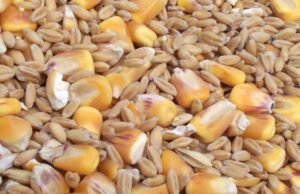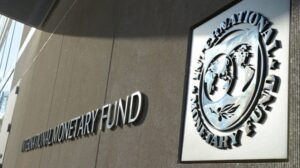
The average value of U.S. stock funds rose 8.7 percent in October on the back of a rising stock market, according to data from Refinitiv Lipper.
The Dow Jones Industrial Average rose 14% during October, posting its best month-over-month gain since 1976 (the S&P 500 and Nasdaq were up in single-digit percentages).
Since the beginning of 2022, the value of equity funds has fallen 18.1%, compared with a jump of 22.5% last year.
The value of international equity funds rose 5.1% in October, but has collapsed 25% since the beginning of the year.
The pressure on stock markets this year has also come from a series of aggressive interest rate hikes by the U.S. Federal Reserve (Fed).
Last week, the Fed expectedly raised its benchmark interest rate by 75 basis points at the end of its fourth consecutive meeting – to 3.75-4% per annum, the highest since January 2008.
Fed Chairman Jerome Powell said during a press conference following the meeting that the Fed may begin discussing a slowdown in the pace of rate hikes as early as the December meeting. However, he noted that it’s too early to talk about a pause in the cycle of rate hikes, its ceiling will be higher than previously expected.
Thus, the October rally of the stock market may be only a pause in the long-term decline, writes The Wall Street Journal.
Investors will continue to follow the statements of the Fed management and the regulator’s decisions on rates in the near term.
In turn, the European Central Bank (ECB) last week raised all three key interest rates by 75 bps for the second consecutive meeting. The benchmark interest rate on loans was raised to 2%, the deposit rate to 1.5% and the rate on margin loans to 2.25%.
Meanwhile, the value of bond funds declined in October and has fallen sharply since the beginning of the year. Funds focused on investment grade debt securities lost an average of 1.4% in October and 16.2% YTD.

FAO (Food and Agriculture Organization of the United Nations) in November compared to October reduced the forecast of world grain production in 2022 by 4.9 million tons – to 2.764 billion tons, according to the report of the organization.
The new figure is 1.8% lower than last year’s harvest. “The bulk of the revision concerns wheat, but the forecast for global coarse grain production has also been slightly reduced,” the document says. Thus, the wheat harvest estimate is down by 3.4 million tons to 783.8 million tons. However, it is 0.6% higher than in 2021 and is an absolute record.
As the experts explain, the revision of the wheat harvest forecast “is almost entirely due to production indicators in the U.S. – a decrease in yields and the reduction of harvesting areas. Forecasts for other producing countries, where the harvest is coming to an end, have not changed.
Forage grain harvest estimates are down 1.3 million tons to 1.467 billion tons. That’s down 2.8 percent from last year. “This is the first decline in production in four years,” the report notes. Most of this month’s decline in the forecast is due to lower corn production estimates in the U.S. and the EU, where recent data show the effects of the drought were more widespread than previously thought. Ukraine’s corn production forecast has been raised.
According to the report, corn acreage will remain planted in 2023, “but further expansion may be constrained by high production costs.”

A new mission of the International Monetary Fund (IMF) will start on November 11 and will probably last until November 17, NBU head Andriy Pyshny said.
“Final arrangements will be formulated based on the results of the second mission, which will start on November 11. We plan that it will last until November 17,” he said during a press briefing on Monday.
According to his words these technical discussions with the participation of him and the Minister of Finance will have to work out the program outline which will form the basis of the NBU action plan for the coming years and, probably, will be the basis of the extended financing program which the Ukrainian team hopes for.
He reminded that last month the work within the frames of the IMF mission held in Vienna had started. On it the NBU and the IMF consolidated the position of monetary and fiscal policy, Pyshny noted.
“In Vienna there were very substantive and, I won’t say simple, but very constructive discussions on the whole range of issues related to the macroeconomic situation, currency policy, credit and monetary relations, financial stability, fiscal consolidation of interaction between the government and the NBU, the need for more active interaction in financing the needs of the Ukrainian budget, domestic debt market”, – said the NBU head.

The law “On the transfer, compulsory alienation or seizure of property under the legal regime of martial law or state of emergency” and the order of the Supreme Commander-in-Chief of the Armed Forces of Ukraine dated 6 November “On the decision of the Supreme Commander-in-Chief’s headquarters dated 5.11.2022” have become the grounds for the National Commission for Securities and Stock Market Resolution that concerns the order of such alienation of the shares of five enterprises.
According to a copy of the NCSSM decision dated November 6, which is available to the Interfax-Ukraine news agency, there were also five corresponding orders issued by the commander of the AFU Logistics Force for the compulsory alienation of property – shares in Ukrnafta, Ukrtatnafta, Zaporizhtransformator, Motor Sich and AvtoKrAZ.
According to the decision of the Commission, the securities account, on which the shares are alienated (except for the shares owned by Naftogaz), will be managed by the Ministry of Defense.
The Commission also pointed out that the operation on alienation of shares should be carried out despite the existence of other burdens on circulation of shares.
The said law implies that in case of impossibility of preliminary full compensation, such property shall be forcibly alienated under martial law with subsequent full compensation of its value within the next five budget periods after the cancellation of martial law at the expense of the state budget.
Assessment of property subject to compulsory alienation shall be carried out in the manner prescribed by law on the assessment of property, property rights and professional valuation activities, says the law.
As reported, the National Commission on Securities and Stock Market (NSCSM) decision of November 6 settled the issue of depositary records of depositary operations for forced alienation of shares into state ownership, the issuers of which are PJSC “Ukrnafta”, PJSC “Ukrtatnafta”, “Motor Sich” JSC, PJSC “AvtoKrAZ” and PJSC “Zaporozhtransformator.
In addition, on the same day the National Commission for Securities and Stock Market allowed meetings of joint stock companies during martial law, if the number of shareholders does not exceed five and if they own 100% of the shares, while until recently it only allowed remote meetings.
In Ukrnafta, the controlling stake belongs to Naftogaz Ukrainy, while the minority stake of about 42% belongs to Igor Kolomoysky and Gennady Bogolyubov’s so-called Privat Group, while in Ukrtatnafta (Kremenchug refinery) the situation is the opposite.
The circulation of all shares of Motor Sich, the largest owner of which was the recently arrested president of the company Vyacheslav Boguslayev, has been blocked since April 2018 after the sale a year earlier of a controlling stake in the Chinese Skyrizon and related parties.
“AvtoKrAZ and Zaporizhtransformator, controlled respectively by Konstantin Zhevago and Konstantin Grigorishin, have been in bankruptcy proceedings for the past few years.
AVTOKRAZ, FOREIGN TRADE, MOTOR SICH, nationalize, UKRNAFTA, ЗТР, УКРТАТНАФТА

Ukrainian banks’ profits in January-September 2022 amounted to 7.4 billion UAH, which is 6.9 times less than in the same period last year (51.4 billion UAH), the press service of the National Bank of Ukraine (NBU) said on Monday.
According to the report, losses of Ukrainian banks in September amounted to 1 billion UAH, while August’s profit amounted to 5.05 billion UAH.
The regulator noted that banks’ revenues in September increased by 13.3%, while expenses increased by 13.1%.
According to the regulator, banks’ income for nine months of this year increased by 30.8% against the same period last year – up to 255.08 billion UAH. At the same time, the fee and commission income decreased by 16% – to UAH 59.8 billion (whereas over the same period last year it increased by 28%).
At that the result from revaluation and purchase and sale operations was positive and made UAH 37.1 billion, while over the same period of previous year it was negative and made UAH 2.4 billion.
At the same time expenses of banking system in January-September 2022 increased by 72.5% compared with this index in 2021 – up to 247.7 billion UAH, including deductions to reserves – 12.9 times, up to 99 billion UAH. At the same time, the commission expenses increased by 2% up to UAH 25 billion,
As reported, the Ukrainian banks in 2021 doubled the net profit – up to 77.5 billion UAH, compared with 41.3 billion UAH in 2020.

Ukraine from the beginning of 2022/2023 marketing year (July-June) until November 7, exported 14.27 million tons of cereals, including 7.66 million tons of corn (53.8% of total supplies), 5.39 million tons of wheat (37.8%) and 1.17 million tons of barley (8.1%).
As reported on the website of the Ministry of Agrarian Policy and Food on Monday, the rate of grain exports from the beginning of this year is by 30.7% lower than during the same period last year (from July 1 to November 7, 2021 20.61 million tons were delivered abroad).
According to the Ministry, Ukraine exported 5.39 million tons of wheat (2.39 times less than the same period last year), 1.17 million tons of barley (3.85 times less), 6.3 thousand tons of rye (11 times less) and 38.4 thousand tons of flour (12.1% less) from the beginning of 2022/2023 MY until November 7, 2022. At the same time, exports of corn exceeded last year’s volume – 7.66 million tons were exported, which is 2.61 times more than it was in 2021/2022 MY on the same date.
It is specified that since the beginning of November, Ukraine exported 1.07 million tons of grain crops, including 388 thousand tons of wheat, 606 tons of corn, 67 thousand tons of barley and 2.9 tons of flour.
As it follows from the Ministry data, during the period of November 2-7, an average of 178 thousand tons of cereals per day were supplied to the foreign markets, whereas during the preceding period of October 26 – November 2 – 170 thousand tons per day, October 21-26 – 132 thousand tons per day, October 1-21 – 141.5 thousand tons per day, and during September 26-30 – a record 267.5 thousand tons per day since the war. Thus, the average daily rate of exports during the reporting period of 2-7 November increased by 4.7% compared to the preceding period of October 26-November 2.
As reported, Ukraine exported 48.51 million tons of grain and leguminous crops in 2021/2022 MY, which is 8.4% more than in the previous MY, despite the full-scale invasion of Russia and the difficulties with the export of agricultural products due to the blockade of Ukrainian sea ports. 18.74 million tons of wheat (12.6% more than in 2020/2021MY), 23.54 million tons of corn (+1.9%), 5.75 million tons of barley (+35.9%), 70.9 thousand tons of flour (-44.1%) were supplied to foreign markets.
In 2020/2021 MY, the country exported 44.72 million tons of cereals and legumes: 16.64 million tons of wheat, 23.08 million tons of corn, 4.23 million tons of barley, 126.9 thousand tons of flour and 18.4 thousand tons of rye.
In 2019/2020, Ukraine exported 56.72 million tons of grain and leguminous crops.